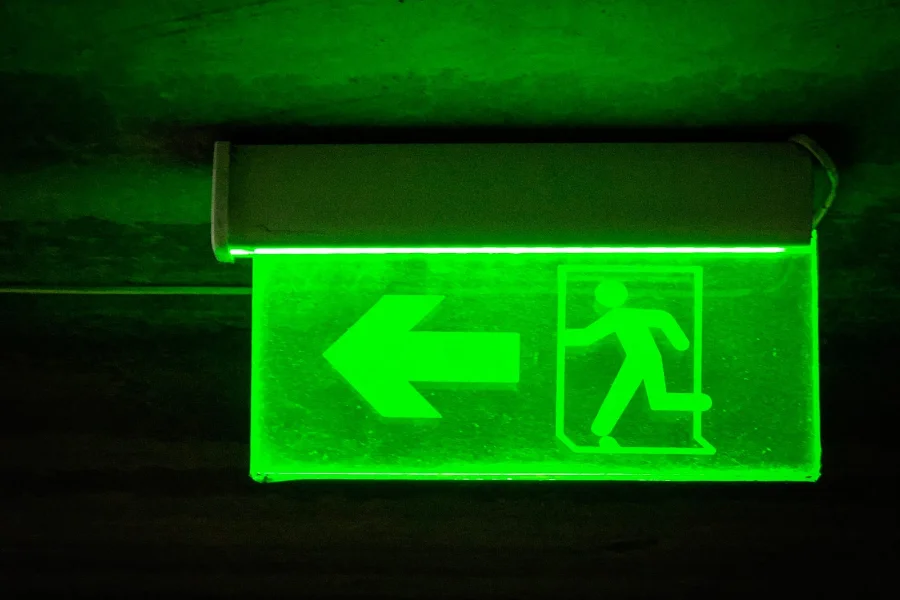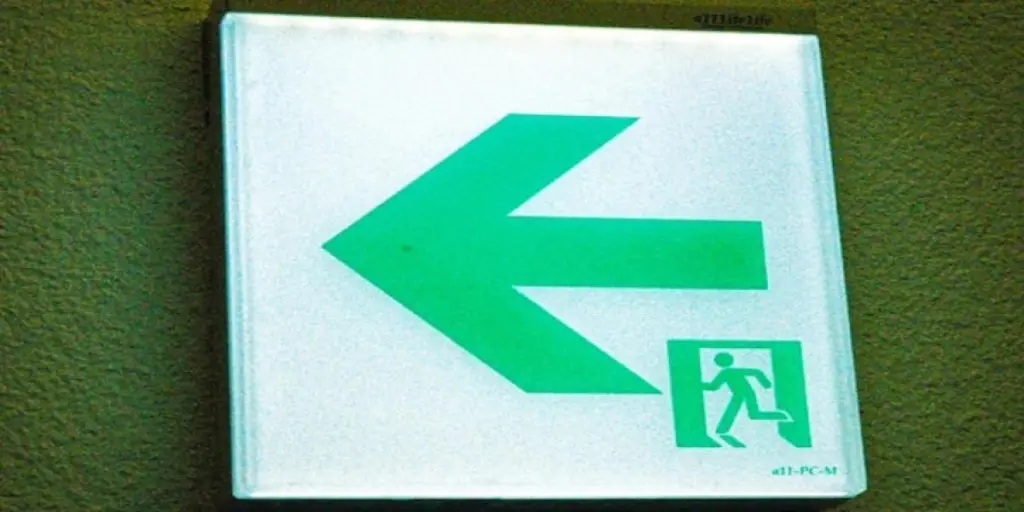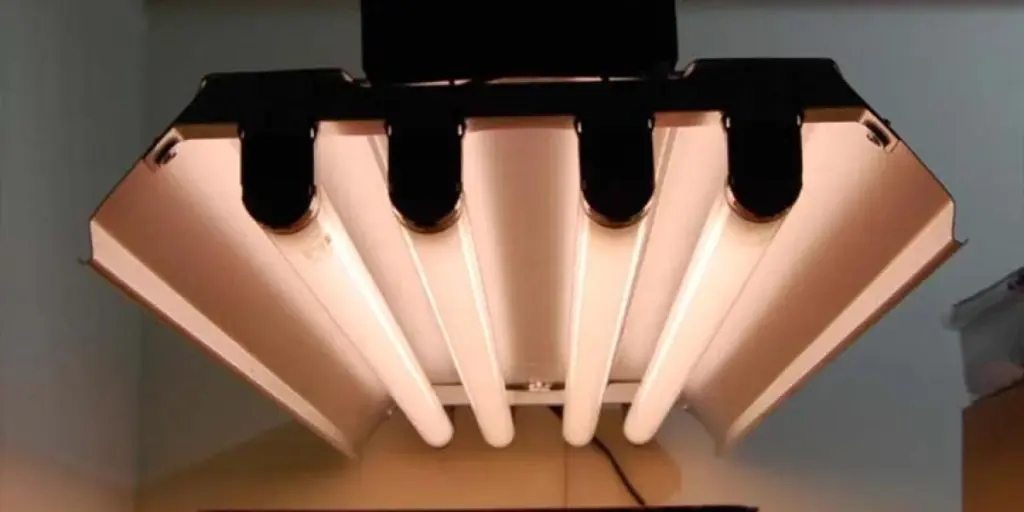Emergency lights are important devices that must be installed in buildings and offices. They are effective in emergencies and during power outages when the inverter battery conks out while occupants attempt to leave the building. However, finding the right product can be difficult, so here is a quick checklist to assist businesses with their research.
Table of Contents
An overview of the emergency lighting industry
Factors to consider when looking for emergency lights
Types of emergency lighting systems
An overview of the emergency lighting industry

The emergency light market was valued at USD 5.48 billion in 2020 and is expected to grow at a compound annual growth rate (CAGR) of 6.9% to USD 10.73 billion by 2030. Increasing construction projects, government initiatives to support energy-efficient lighting solutions, and decreasing prices of LEDs are the main factors that have contributed to the advancement of this segment.
The most important technological advancement in emergency lighting has been the incorporation of LEDs in emergency exit lights. Furthermore, emergency lights are required by law in commercial buildings, fueling demand. However, the most significant barrier to market growth is the high capital investment and operational costs.
This article offers tips to consider before purchasing emergency lights, so keep reading to find out more and make an informed decision.
What are emergency lights and how do they work?
An emergency light automatically activates a battery-powered lamp, and its purpose is to provide light in emergencies so people can find a safe path. The emergency light circuit replaces incandescent lamps with light-emitting diodes, making it more power efficient and bright.
Each emergency light is connected to the building’s electrical supply, and each light has its own circuit. These lights also have a backup battery to keep them running during a power outage. However, because the lifespan of these batteries is typically shorter than that of other types of lighting, they must be regularly checked to ensure that they can power the emergency lights for at least 90 minutes. Professionals must test the batteries every six months.
In the market, there are different types of emerging lights in various shapes and sizes. Each light is tailored to its intended use. The NEC (National Electric Code) requires the installation of emergency lights in all public and commercial establishments, such as government offices, theaters, warehouses, retail outlets, and factories.
Factors to consider when looking for emergency lights
One should not choose any emergency light on the market without ensuring that it possesses all of the desirable qualities customers seek. So, if you need help choosing the right product in today’s market, here are a few pointers on settling on the best emergency lights.
Brightness is, without a doubt, an important criterion in emergency lights. It is critical that the light be sufficiently bright so that the exit path is clear and people can use it as intended. When the light is dim, people may miss the sign and thus be unable to leave quickly. At the floor level, the emergency lights should not be illuminated at less than 0.5 lux.
Another factor to consider in industrial emergency lights is their quality. In most cases, they are made using anodized aluminum and are quite tough. Other materials are also used to manufacture emergency lights, but aluminum is the most common option.
It is a good idea to look into waterproof lights because they can sometimes be placed in open areas, exposing them to rain, which can have an impact on the performance of the lights.
It is also critical to consider the battery backup time. The backup time refers to the amount of time the lamp can operate at full brightness and without fluctuation after it has been fully charged. The average backup time for the most available lights today is 4 to 8 hours. Lights that offer more than 10 hours of battery backup are an excellent choice.
Always look into the charging options available with the lamp. For example, check whether it supports solar charging, grid charging, or both. Products that support both grid and solar charging are an excellent choice. Furthermore, the charging time needed to charge the lamp fully should not exceed 10 hours.
LED lights are a good choice as they are highly efficient, contain no toxic elements such as mercury, and are relatively eco-friendly. They also have a long service life, eliminating users’ need to charge or replace the bulbs. Most LED lights have a lifespan of 10,000 to 50,000 hours. These lights are inexpensive and provide instant illumination. Furthermore, LED light prices have steadily decreased, with the average emergency light costing between USD 35 and USD 60, depending on the brightness and quality of the product.
Additional requirements for emergency lighting:
– Sign covers: With the help of protective covers, the lifespan of the emergency lights can be increased. They protect the emergency lighting investment and are a cheap add-on.
– Emergency ballasts: Backup replacements and ballasts offer efficient and lasting lighting solutions. They add an extra layer of security, maximizing safety.
– Power inverters: Inverters provide power to the lighting fixtures during a power outage. They convert energy from a DC battery to AC voltage so an uninterrupted power supply is available during emergencies.
Types of emergency lighting systems
As previously stated, there are different lighting systems designed for different spaces. Let’s break each one down:
Maintained and non-maintained lights
Maintained lights are illuminated 24/7 and rely on battery power to stay lit during power outages. The light is most commonly an LED and is often used as escape route lighting in different buildings such as hospitals and offices. A maintained light is more flexible and can be programmed to come on before and during a power outage. They are used to avoid total darkness in a room and are typically used in cinemas.
On the other hand, non-maintained lights are not flexible and only come into motion when a power cut is detected. Their only power source is the battery charged by the mains. However, these lights are less expensive, eco-friendly, and tend to be the most popular option. Note that they require a constant flow of electricity to keep charged. Thus, these lights only signal the emergency exits during an emergency to show occupants the way out.
Sustained emergency lighting
The sustained light is a mix of non-maintained and maintained light. It is typically used when both an emergency and a standard light are required. For example, an entryway must be lit during the day and serve as an emergency exit during a power outage. The battery supply inside the fixture will keep the LED light on during a power outage.
Temporary lighting
Power outages can occur in hospitals and fire stations, and temporary lighting helps occupants in the dark. They come in various sizes and can be used both outdoors and indoors.
– Thermoplastic: These lights are reliable and cheap, costing less than USD 20 per unit. However, these lights can only be used indoors.
– Steel: Available in various wattage and voltage capacities, steel is most commonly used in warehouses, factories, and institutions. These lights can be controlled remotely.
Conclusion
Consumer expectations continue to shift as technology advances. Incorporating LED technology in emergency lighting has resulted in significant market growth as they are cost-effective, require no maintenance, and are efficient. Visit Alibaba.com to learn about the most recent innovations in emergency lighting.




